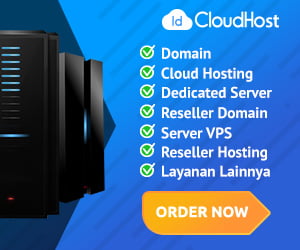Safe Link Converter
Made your link safe to visit.
How to use our tool:
- Click on How To Use menu above.
- Click on the code and CTRL + C on your keyboard.
- Paste the code in your HTML blog theme before the </body>.
- Save your HTML blog theme. you are done!
- Now, your blog's outbound links was encrypted!
4 Basics of IoT Device Management - For IoT device deployment, there are at least 4 basic requirements for device management: main software maintenance, diagnosis, configuration, and authentication. In this article, we are going to get a deeper insight into these 4 categories. Read on to find out more.
1. Provisioning and Authentication
The process of device authentication helps identify a device to ensure it's trustworthy. In other words, the cloud service that the device needs to connect should have a system in place to find out if the device is genuine.
Similarly, the process of provisioning enrolls a device into the required system. Also, authentication allows the registration of device with proper credentials. The device that you want to deploy has either a key or certificate for the identification of its authenticity.
2. Control and Configuration
Typically, devices are shipped with default configuration. Therefore, each device needs to be configured with relevant attributes like application-based settings, location and name.
For the implementation of specific control capabilities, you have to reset the device in order to activate the default state. Plus, it's done to recover from different types of errors and apply the configuration changes you require.
3. Monitoring and Diagnostics
Since one system has tons of remote devices, it's important to ensure that all of the devices operations work properly. Aside from this, minor issues can have a great impact on the sentiment of the customer to get the desired outcome. Therefore, it's important to monitor and diagnose the system regularly to prevent downtime because of problems, such as software bugs.
It's important to download software dumps and logs for proper diagnosis, which helps fix bugs. You can't just go to the device physically in order to debug it.
4. Software Updates and Maintenance
Although you may not know the importance of it, software update and maintenance is important. This is important to add new functionalities and features to it. As a matter of fact, this is an important part of device management.
Software maintenance has a lot of potential levels. For instance, there should be a process to update the device software in a secure fashion. Aside from this, this process helps fix different security vulnerabilities across the entire platform.
Aside from this, software maintenance in an IoT remote device is also a long-term, continuous process. Keep in mind that you may not enjoy a persistent connection to your desired IoT device wirelessly. Also, one of the main reasons why updating the software is important is because you need to ensure the device keeps working properly whenever you need it.
We know that operating these devices is important for business reasons. If a device is not working when you need it, it can cause huge losses.
Conclusion
Long story short, these are the basic functions of remote IoT device management. All of these functions play a great role as far as the success of your business is concerned. Therefore, you may want to explore these functions to ensure the devices work properly. Hopefully, this article is informative.
If you are looking for a service for your IoT remote device management or you want to connect remote SSH, we suggest that you check out Remote IoT.
Article Source: http://EzineArticles.com/10291021
